You’ve put in countless hours of training and practice. Your horse is fit and ready. Now he needs to look like a star! Before we dive in to grooming, keep in mind that proper nutrition is the foundation for a gorgeous coat. Even horses that aren’t groomed regularly will have healthy coats if their nutritional needs are met. But competition takes everything to the next level. You want your horse to be a “10,” so we turned to the experts for advice. (Spoiler alert: bathing isn’t the answer!)
English Sport Horse Shine
Weather permitting, Gude will bathe a horse two to three days before the show. For gray or white horses, she’ll bathe closer to show day, or rely on a spot remover/dry shampoo. A shine spray can be applied to a totally clean, dry coat.
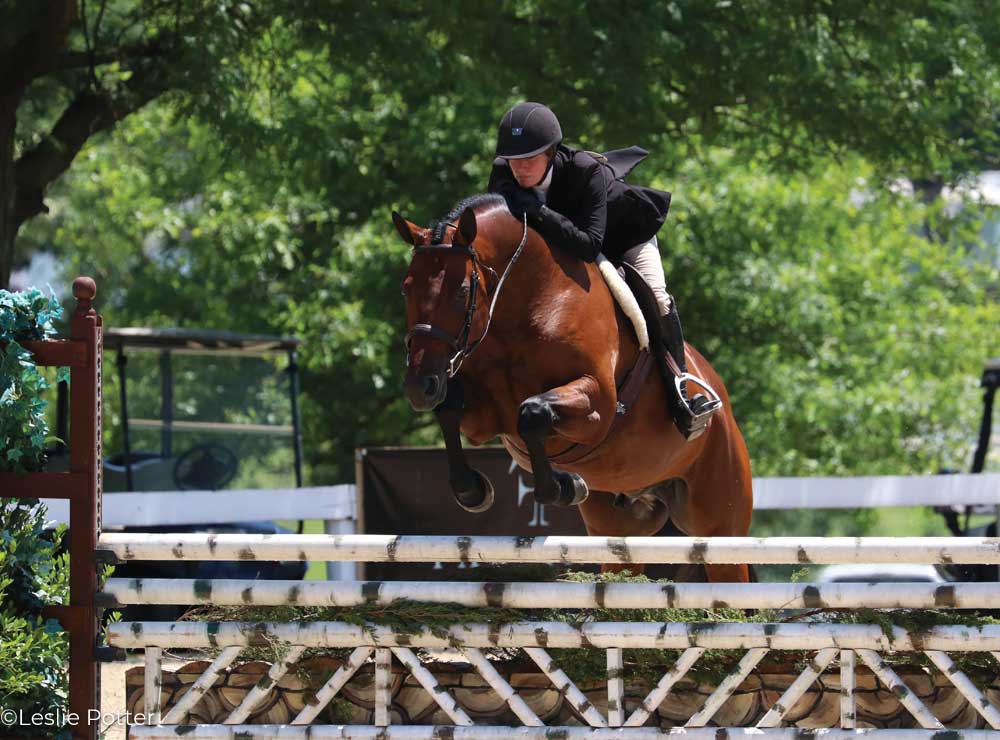
“This helps create an invisible barrier by protecting the coat so stains don’t set and are easier to remove,” she says. “Look for one without added alcohol, which can dry the hair.”
The days just prior to an event include lots of elbow grease, meaning extra currying and rubbing with grooming gloves to bring up the coat’s natural oils.
“I absolutely love grooming gloves,” says Gude. “Most of the time I just use those and a brush. Products are there to help, but the basis of your grooming routine needs to be hands-on with a curry comb or grooming gloves.”
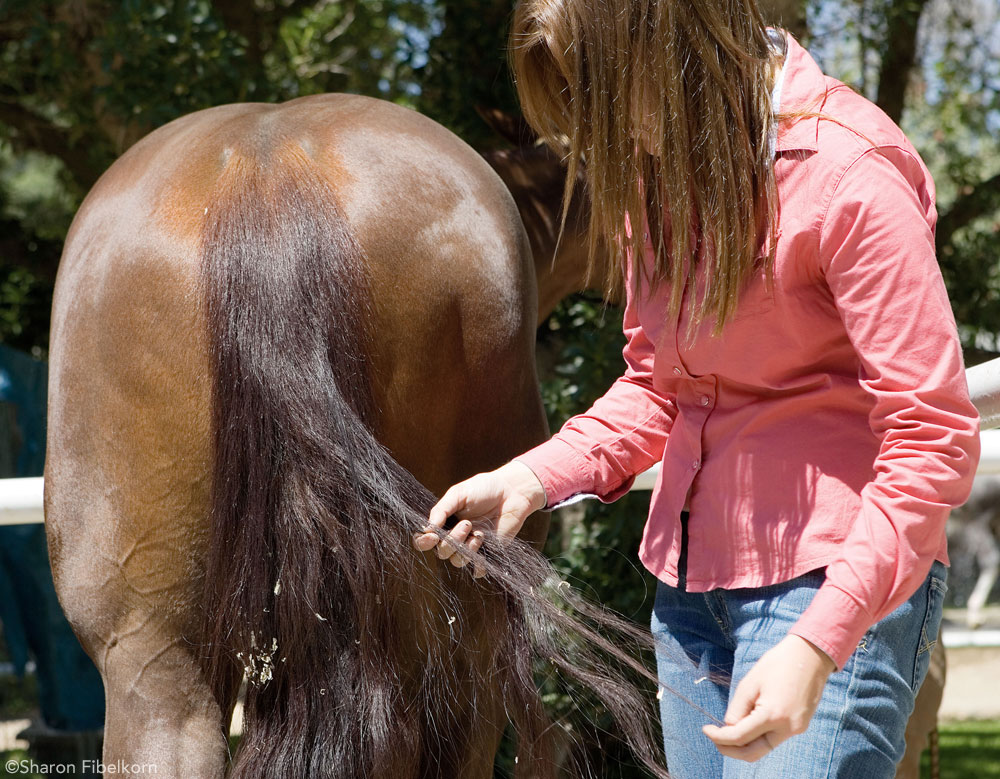
Continued maintenance is the key to knot-free manes and tails.
“If you address them every day, you’re never going to have the challenge of tangles,” says Gude. “If a tail is sticky, wash it, and if it’s getting tangled, use a detangler product. Shedding and regrowth are completely natural, but if you keep a tail clean, conditioned, detangled and touch it every day, you will prevent breakage and damage.” She recommends never letting a tail get so long the horse can step on it.
Many grooms clip the horse’s legs from the knees and hocks down.
“This creates a really clean look and makes it easier to remove stains,” she says. Using fly boots when the horse isn’t getting ridden may be necessary, since clipped legs are more vulnerable to flies.
Before competition, whether legs are clipped or not, grooms may use spray pigment color on dark legs and baby powder or corn starch to brighten white markings.
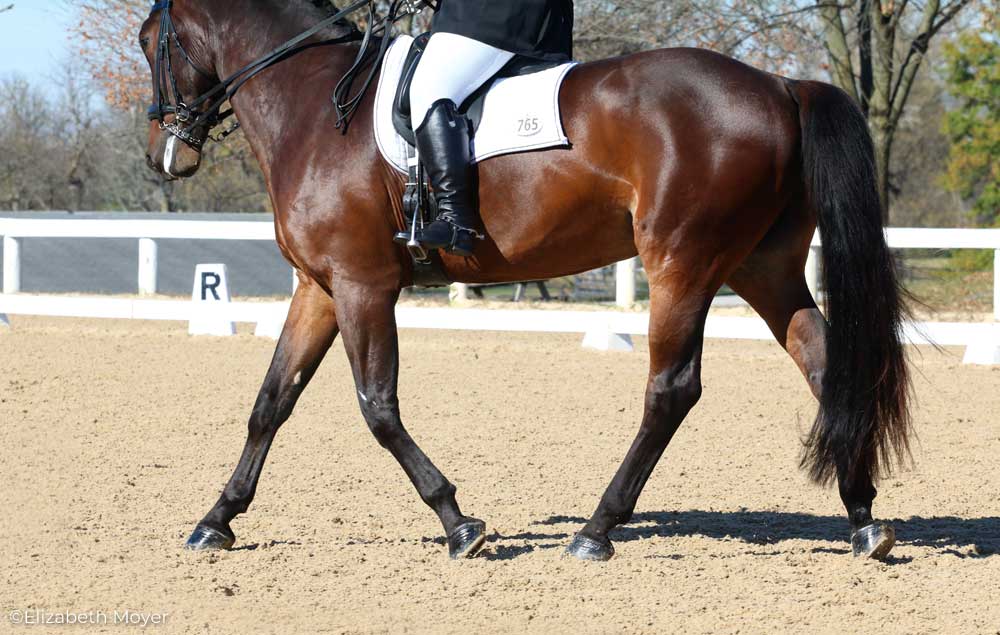
Gude emphasizes the importance of keeping the horse and his environment as clean as possible right before a show.
“I might put on a slinky hood and sheet to create a barrier to stains,” she says. “I also strip the stall so there’s only clean bedding.”
Applying oil to the face isn’t frequently seen in English disciplines, so it must be used subtly, if at all.
“A tiny bit of grooming oil goes a really long way,” says Gude.
She keeps stacks of washcloths on hand for removing stains, cleaning ears and noses, and for the final all-over wipe-down of the horse.
“Some disciplines allow colored hoof polish, while others only allow clear, so know the rules for the discipline you’re competing in and make sure color is appropriate,” says Gude. “In dressage, we use clear hoof polish or paste. I apply it before warm up and in between warmup and going into the ring.”
Western Show Pen Polish
Roger Daly of Aubrey, Texas, has a well-respected reputation for starting young horses, fixing “problem” horses, and selling quality Quarter Horses that compete in reining, cutting, cowhorse and racing. In addition to prepping show horses, Daly takes approximately 250 yearlings to 15 different auctions each year, so it’s no exaggeration that he has grooming down to a science.
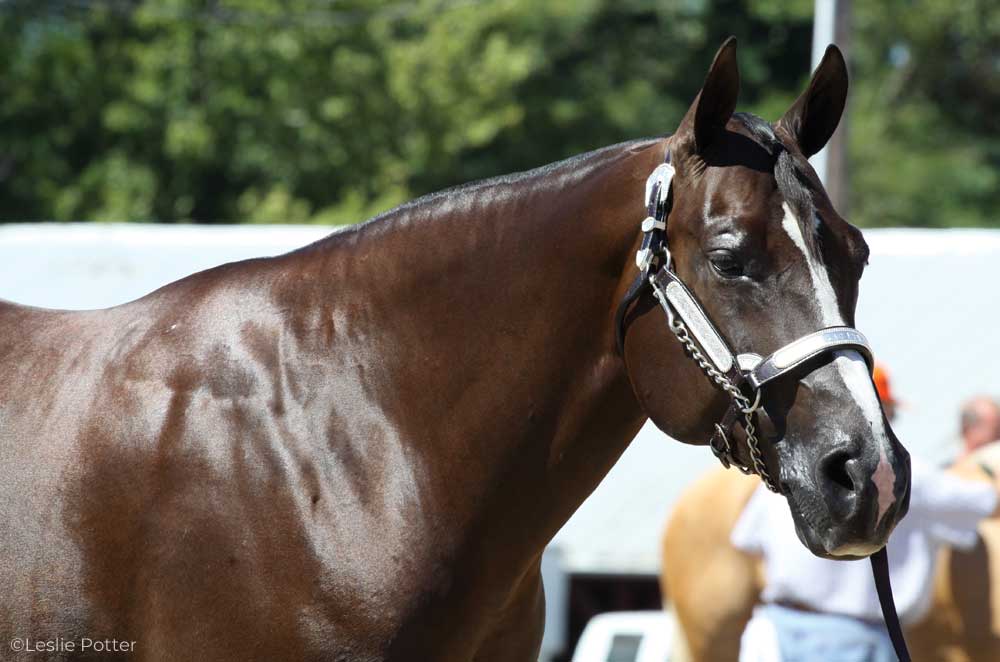
Much of what it takes to present a polished look in the ring takes place long before you ever go to an event. Ideally, you’ll have at least 90 days to get the horse’s coat, mane and tail into prime condition before an event.
Daly uses hair conditioner on manes and tails.
“For cutters, reiners and cowhorses, we leave the mane long,” he says. “For others, we pull the mane so it’s about 4 to 5 inches long, or the length of a dollar bill.” He keeps long tails clean, conditioned, braided and in a tail sock or bag at home. This way they’re tangle-free and he only needs to run a soft brush through them at an event.
Depending on the time of year, Daly uses blankets and hoods. He uses a coat conditioner at home, but generally avoids it at events as some products can attract dust, and the coat is already naturally shiny from good nutrition and regular grooming.
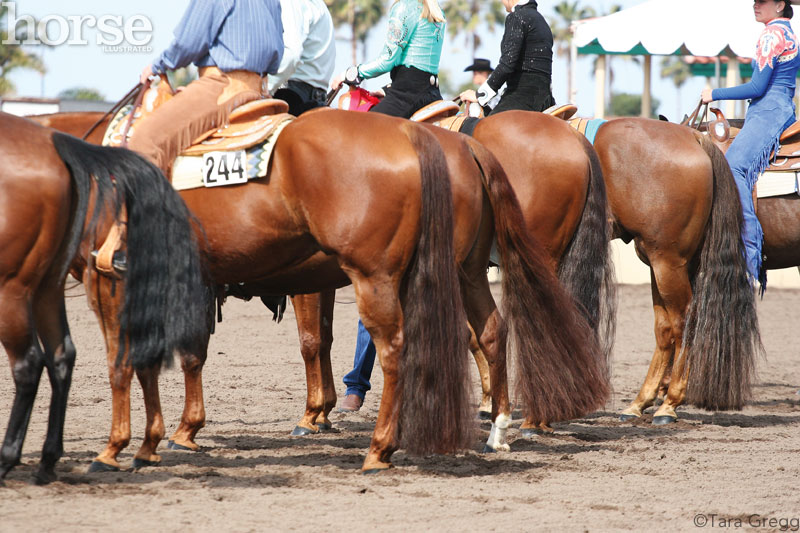
Like Gude, Daly isn’t a fan of frequent bathing.
“You don’t want to take the oil out of the coat, and if you bathe right before an event, it can make the hair stand up,” says Daly. “We bathe and rinse horses off at home when they’re sweaty, but we rarely bathe on the road unless the horse is extra dirty or gets warm in the trailer.”
Many pros use horse vacuums, and Daly swears by them. He takes them to events and follows the same basic grooming routine as he does at home. Every session starts with a thorough deep curry, followed by vacuuming to remove all the loosened dust and dirt. Daly follows the vacuuming with a stiff body brush, then a fine brush, and finally, towels off the entire body.
Right before going into the ring, Daly applies a very small amount of baby oil around the horse’s eyes and muzzle. He likes to brighten and highlight the area so it looks a little “sharper.”
“Some people in western disciplines use black polish for hooves, but I prefer clear hoof polish or oil,” says Daly. “This way you aren’t covering anything up and it looks natural, but the foot is shiny and it’s easy to clean mud and dirt off of it.”
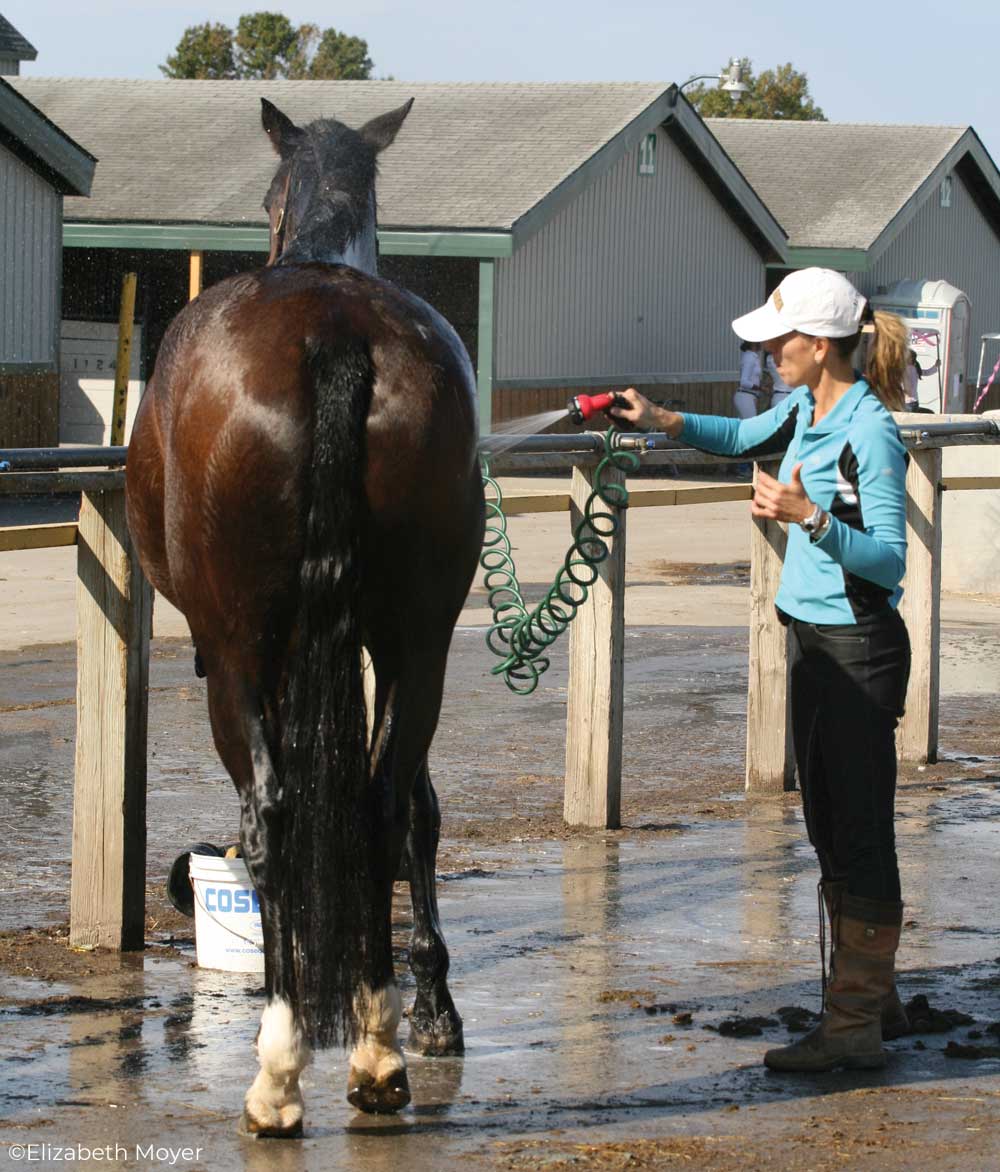
Daly keeps dry shampoo handy to quickly remove any manure spots from white markings.
At home, Daly clips horses’ bridle paths, fetlocks, whiskers and ears every couple of weeks. To present the cleanest silhouette, he clips two days before leaving for the event and brings clippers along for any necessary touch-ups.
Daly clips the lower legs of horses being shown in halter, western pleasure or going to a sale. This makes it easier to keep their legs clean and makes for a neat presentation. For horses competing in reining, cutting and cowhorse events, however, the lower leg hair is typically left alone.
“The biggest thing is having a routine with good nutrition and regular exercise and grooming,” says Daly. With these basics of good health in place, he adds, all you need to do at an event is maintain it and add the finishing touches.
Further Reading
This article originally appeared in the June 2019 issue of Horse Illustrated magazine. Click here to subscribe!

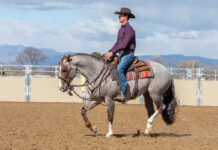
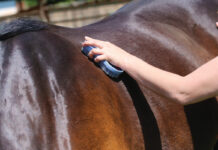

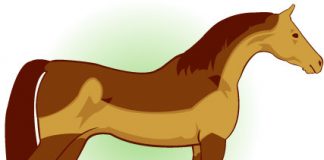

Thanks for your advice about using hair conditioner on my horse throughout the year but not during shows season. It’s good to know that conditioners can be used for her to become dusty at events, I’ll have to avoid that so that she can look as shiny and polished as she can on a show day. I’ll also have to ask a veterinarian to see if they can give me suggestions on what products I can use on her and any other tips they can provide. This is my first horse so I’m pretty green when it comes to all the grooming. Here’s hoping I can handle it though!